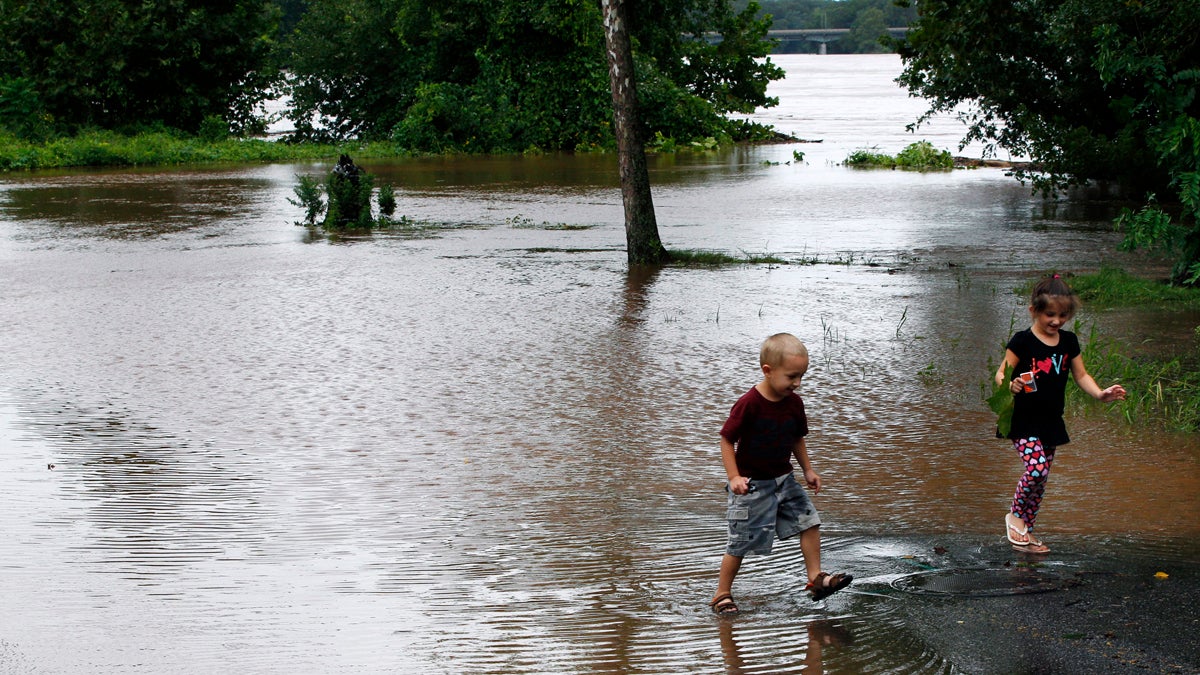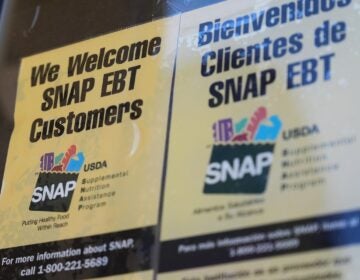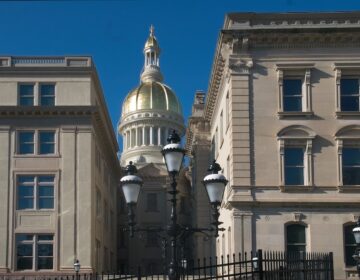Bucks community moves to secure flood insurance tax breaks

A brother and sister walk in a flooded Delaware Avenue in Yardley, Pa., in August 2011 as the Delaware River overflowed after rains from Hurricane Irene. (Mel Evans/AP Photo)
After a few significant floods from the Delaware River and canal from 2004 through 2006, Lower Makefield Township resident Scott Burgess saw his insurance costs skyrocket.
“Basically, my flood insurance from the time I bought this house between 2005 and 2006 went from a little over $1,000 a year to this year it was around $3,600 a year,” said Burgess. “It’s getting close to how much I pay for my taxes, and it’s driving my housing value down terribly.”
Burgess founded the community group Residents Against Flood Trends, and RAFT found a FEMA program, the Community Rating System, which provides tax relief for taking certain precautions such as elevating a home.
All Bucks County townships are required to pass new ordinances by March to comply with updated FEMA flood insurance rate maps, but Lower Makefield took the initiative in July to try qualifying for the insurance breaks.
“The estimate is that we’re probably going to get in the 25 to 35 percent discount range based upon what they’ve told us so far,” said Burgess.
Flood insurance is now almost exclusively purchased through FEMA’s National Flood Insurance Program, and premiums have gone up in part because major storms, old flood plain maps and underfunding have left FEMA in debt and playing catchup, says Lower Makefield Township engineer Mark Eisold.
“FEMA has this [rating] program so that they can have a little bit more control, a little bit of understanding of where their money goes for disaster relief when claims are filed,” said Eisold.
Some of that control includes requiring those who do major renovations on their houses – worth 50 percent of the structure’s original value – to comply again with the new FEMA flood code.
“FEMA’s saying, ‘OK, you’re all of a sudden not grandfathered in and you need to be in compliance with the current standards,'” said Eisold. “And that may include raising up your house so that you’re above the base flood elevation.”
Burgess admitted that renovations equal to 50 percent value are probably more than most people are concerned with, but he said that even in the low-risk flood areas of Lower Makefield where he lives, home prices will suffer.
“The whole thing behind it is, I just don’t think that the risk in our neighborhood for flooding is worth what they’re making us pay,” said Burgess. “It’s killing the housing values. And, believe me, if somebody ended up having to raise their house, somebody’s going to drive along and go, ‘Why’s that house elevated?’ and that will drive the value down more. It’s a domino effect.”
Both Burgess and Eisold agree that joining the new rating system will have an overall positive effect by lowering insurance bills, but that’s only if Lower Makefield is accepted.
The township awaits a “letter of good standing” from FEMA, and a decision will likely come by October.
WHYY is your source for fact-based, in-depth journalism and information. As a nonprofit organization, we rely on financial support from readers like you. Please give today.




